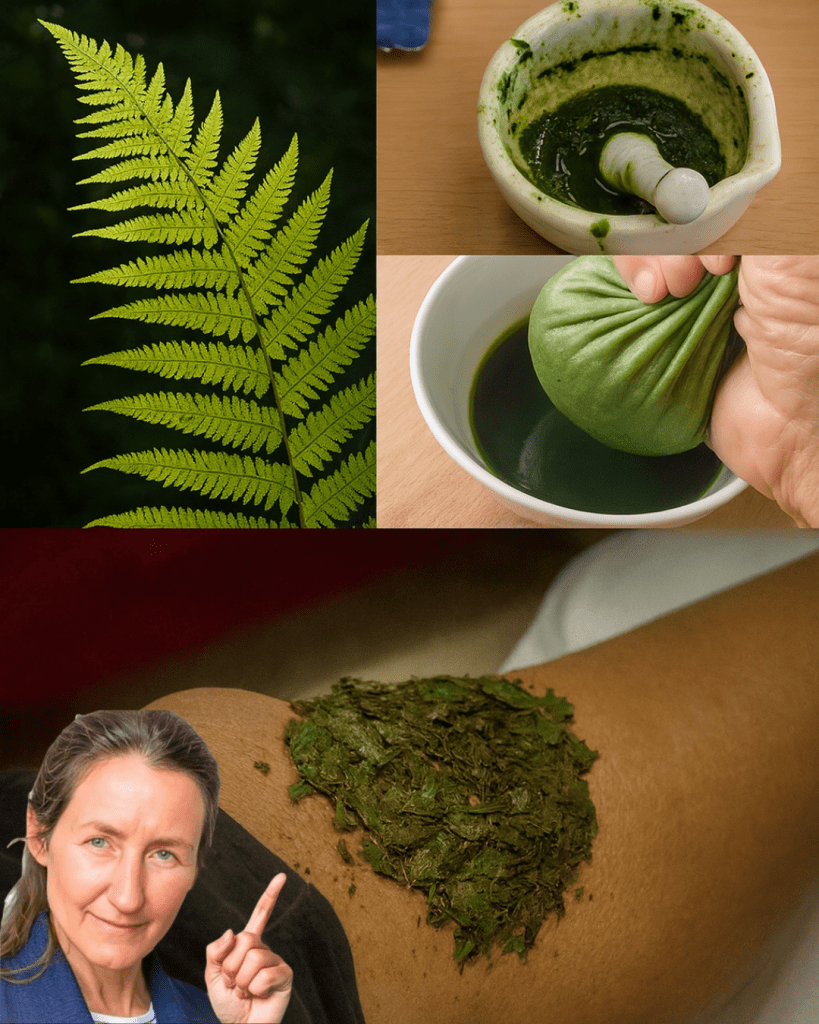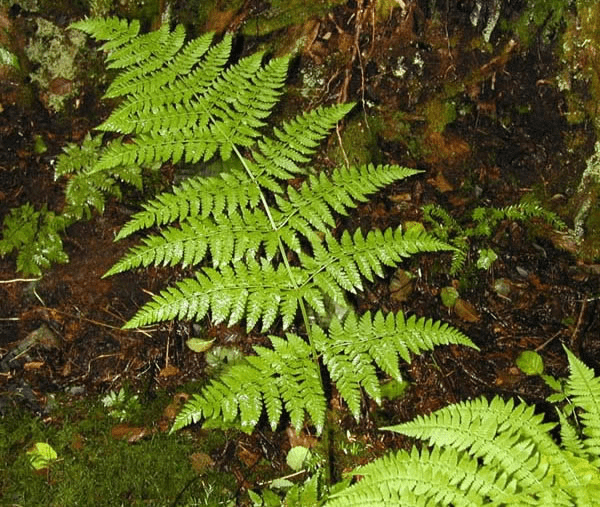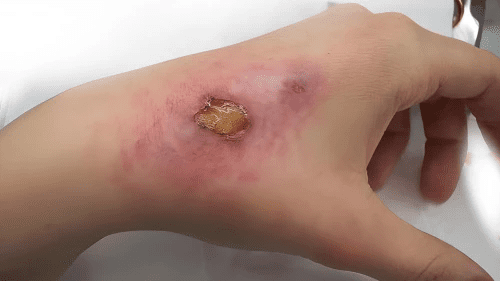Imagine stumbling upon a natural remedy that’s been hiding in plain sight, tucked away in lush forests and quiet gardens. A remedy so powerful yet so gentle that it can transform the way you treat wounds, offering healing straight from the earth. Fern leaves, those delicate green fronds swaying in the breeze, hold secrets that ancient healers swore by and modern science is only beginning to understand. What if this unassuming plant could be your family’s go-to solution for cuts, scrapes, and burns? Let’s dive into the captivating world of fern leaves and uncover why they’re a game-changer for wound treatment.

🌱 Why Fern Leaves? The Ancient Wisdom Meets Modern Healing
For centuries, indigenous cultures and traditional healers have turned to fern leaves to mend wounds and soothe skin ailments. These lush, feathery plants aren’t just a pretty sight in nature—they’re packed with bioactive compounds that make them a powerhouse for healing. From reducing inflammation to fighting infection, fern leaves offer a natural, accessible, and effective way to care for your family’s health. But what makes them so special? Let’s explore the remarkable benefits and uses that position fern leaves as a must-have in your natural remedy toolkit.
💚 The Science Behind Fern Leaves’ Healing Magic
Fern leaves are brimming with compounds like flavonoids, tannins, and antioxidants, which work together to promote faster wound recovery. These natural chemicals help reduce swelling, protect against harmful bacteria, and encourage skin regeneration. Unlike synthetic ointments that can sometimes irritate sensitive skin, fern leaves provide a gentle yet potent alternative that’s suitable for all ages. Studies have shown that certain fern species, like the silver fern or bracken fern, contain antimicrobial properties that can prevent infections in open wounds, making them a reliable choice for natural wound care.
Beyond their chemical makeup, fern leaves are rich in vitamins and minerals that nourish the skin. Vitamin C, found in many fern varieties, boosts collagen production, helping wounds close faster and reducing scarring. Meanwhile, their astringent properties help tighten the skin, minimizing bleeding and promoting a clean healing process. This combination of science-backed benefits makes fern leaves not just a folk remedy but a credible option for modern wound treatment.
🩺 How Fern Leaves Work Wonders on Wounds
The magic of fern leaves lies in their versatility. Whether you’re dealing with a minor cut from a kitchen mishap or a stubborn scrape from an outdoor adventure, fern leaves can step in as your natural first aid. Their anti-inflammatory properties soothe redness and swelling, creating a calming effect on irritated skin. This is especially helpful for burns or abrasions, where inflammation can delay healing and cause discomfort.
Fern leaves also act as a natural antiseptic, keeping wounds clean by warding off bacteria and fungi. This is crucial for preventing infections, especially in environments where medical supplies might not be readily available. For families with active kids or outdoor enthusiasts, fern leaves offer a portable, eco-friendly solution that’s as effective as it is sustainable.
🌿 Step-by-Step: Using Fern Leaves for Wound Care
Ready to harness the power of fern leaves? Here’s a simple guide to using them effectively for wound treatment. Always consult a healthcare professional for serious injuries, but for minor wounds, fern leaves can be a fantastic natural aid.
- Identify the Right Fern: Not all ferns are created equal. Look for edible or medicinal varieties like the silver fern, lady fern, or maidenhair fern. Avoid toxic species and ensure the plant is free from pesticides or pollutants.
- Clean the Wound: Gently rinse the wound with clean water to remove dirt or debris. Pat it dry with a clean cloth to prepare for treatment.
- Prepare the Fern Leaves: Wash fresh fern leaves thoroughly under running water. For best results, crush or grind the leaves into a paste to release their healing compounds. You can use a mortar and pestle or simply bruise the leaves with your hands.
- Apply to the Wound: Spread the fern paste directly onto the wound or place whole leaves over the affected area. Secure with a clean bandage or cloth to keep it in place. For added benefits, you can mix the fern paste with a natural carrier like honey, which enhances its antimicrobial effects.
- Monitor and Reapply: Leave the fern treatment on for a few hours or overnight, then rinse and reapply as needed. Most minor wounds show improvement within a day or two.
This straightforward process makes fern leaves an accessible remedy for anyone, whether you’re at home or exploring the great outdoors.
💡 Fern Leaves for Every Family: Safe and Versatile
One of the standout features of fern leaves is their safety profile. Unlike some herbal remedies that require careful dosing, fern leaves are generally safe for topical use when prepared correctly. They’re gentle enough for children’s delicate skin yet effective for adults dealing with chronic wounds or slow-healing injuries. This makes them an ideal addition to your family’s first-aid kit, especially for those who prefer natural alternatives to over-the-counter products.
Fern leaves are also incredibly versatile. Beyond wound healing, they can soothe insect bites, reduce bruising, and even alleviate minor skin irritations like rashes. Their cooling effect is a blessing for sunburns, providing instant relief without the need for chemical-laden creams. For busy parents or adventurers, keeping a small stash of dried fern leaves or a homemade fern salve ensures you’re always prepared for life’s little accidents.

🌍 Sustainability and Accessibility: Nature’s Gift to All
In a world where eco-conscious choices matter, fern leaves shine as a sustainable remedy. They grow abundantly in many regions, from tropical jungles to temperate forests, making them easy to source ethically. Foraging for ferns (with proper knowledge) or growing them in your backyard is a cost-effective way to tap into their benefits. Plus, using fern leaves reduces reliance on mass-produced pharmaceuticals, aligning with a greener, more natural lifestyle.
Their accessibility is another major draw. Whether you live in a rural area or an urban jungle, ferns are often just a short walk or garden visit away. This makes them a practical choice for communities with limited access to medical resources, offering a low-cost, high-impact solution for wound care.
🩹 Beyond Wounds: The Broader Benefits of Fern Leaves
While wound healing is the star of the show, fern leaves have a supporting role in overall skin health. Their antioxidant properties protect skin cells from damage, potentially slowing the signs of aging. Regular use of fern-based remedies can improve skin texture, leaving it softer and more resilient. Some cultures even use fern extracts in beauty rituals, blending them into masks or ointments for a radiant complexion.
Fern leaves also have a calming effect on the mind. The act of preparing and applying a natural remedy can be therapeutic, fostering a deeper connection with nature. For families, teaching kids to use fern leaves for minor scrapes can instill a sense of self-reliance and respect for the environment—a small but meaningful way to pass down wisdom.

🌟 Why You Should Try Fern Leaves Today
Fern leaves are more than just a plant—they’re a bridge between ancient wisdom and modern needs. Their ability to heal wounds, soothe skin, and promote wellness makes them a treasure worth discovering. Whether you’re a parent looking for safe remedies, an outdoor enthusiast seeking portable solutions, or simply someone curious about nature’s gifts, fern leaves have something to offer.
So, the next time you spot those delicate fronds in your garden or on a hike, don’t just walk by. See them for what they truly are: a hidden remedy waiting to transform the way you care for your family’s health. Try incorporating fern leaves into your routine, and you might just find yourself amazed at their gentle yet powerful effects. Nature has been healing us for millennia—why not let fern leaves work their magic on you?









